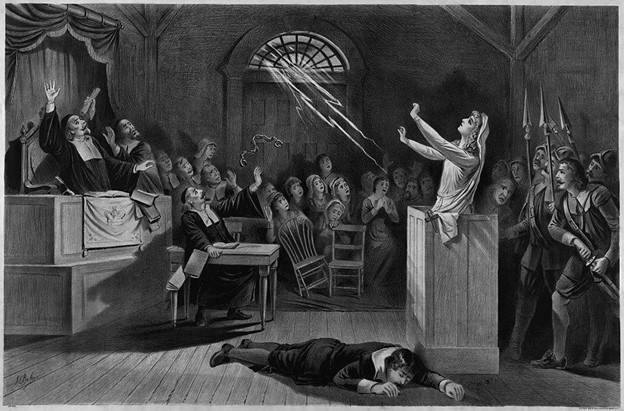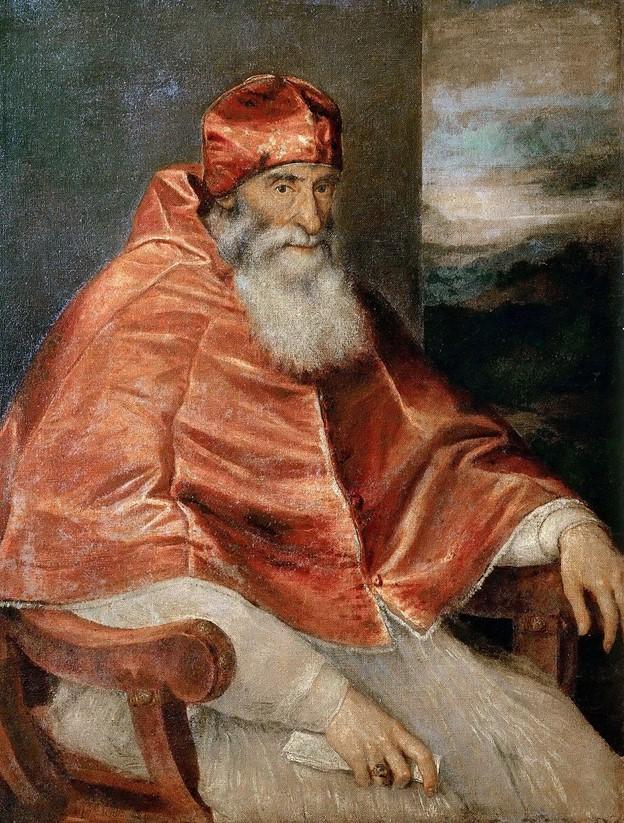The world’s largest online family history resource - Start now
-
Black History Month – Ancestry Initiatives to Honor Black Heritage -
Marking 80 Years Since Auschwitz Liberation: Our Commitment to Holocaust Remembrance -
1921 Census of England & Wales Now Available -
Updated Ancestral Subregions
GET THE LATEST
New posts + monthly newsletter.
GET THE LATEST
New posts + monthly newsletter.
Unlike Christmas or the Fourth of July holiday in America, a leap day is not an event that gets a ton of airplay. Once every 4 years, the Gregorian calendar has an extra day, stretching the year from 365 days to 366. You probably won’t see a February 29 leap day display at your local mega mart, but just because this extra day isn’t always in the spotlight doesn’t mean it isn’t significant.
For genealogists, a leap year’s meaning runs far deeper. Changes in our shared calendar mean the way we look at time today isn’t how people looked at and recorded it centuries ago. As simple as 1 extra day seems, it can create challenges for experts and amateur sleuths interested in accurately piecing together the past.
What Is a Leap Year? A Brief Dive Into the Time Warp
The concept of a leap year came about due to discrepancies between the solar calendar and how humans were measuring time. The solar calendar reflects how long it takes our planet to do a single loop around the sun—365 days. Except the true timing of Earth’s solar orbit is 365.25 days. Eventually, being off by about a quarter of a day per year pushes the Gregorian calendar (an example of a solar calendar) further and further off its timing.
This isn’t a new discovery, either. Julius Caesar first spotted the problem way back in 45 BC. He created the Julian calendar, adding an extra day every 4 years.
That solution lasted until 1582 AD when Pope Gregory XIII found a better way to fix the discrepancy. His Gregorian calendar introduced February 29—extending February’s traditional 28 days by one every 4 years—and soon the new calendar was used across Western Europe, Great Britain, Japan, China, and beyond.
What Does This Mean for Genealogists?
Because leap years haven’t always existed, the way historical records list birthdays, anniversaries, and other key dates may be off. For true accuracy, researchers should look into which calendars were used when the event was recorded. Otherwise, you can incorrectly estimate the length of a war or assume a great-grandparent was born in March when they really had a leap year birthday.
The Science of Leap Year: Unraveling the Calendar Quirks
One of the more confusing leap year rules has to do with non-leap years. A leap year happens every 4 years, or every time a year is divisible by four (e.g., 800, 1200, and 1600). But century years that cannot be evenly divided by 400 (e.g., 1500, 1700, and 1900) don’t get a leap day.
This approach mostly accounts for that pesky 0.24219 of a day overage—but not quite. A year on the Gregorian calendar and a scientifically calculated solar year are still about 26 seconds apart. Scientists have worked to offset even this tiny discrepancy by occasionally applying 1-second adjustments, called leap seconds, to the Coordinated Universal Time.
This type of meticulous timekeeping is inseparably integrated into our culture, impacting:
- How events are recorded, especially when items such as legal documents and journal entries are time-stamped down to the second
- How we understand the sequencing/timing of historical events
- The global context of historical events such as the timing of an event in one location and how that event may be timed and recorded differently in a location that uses a different calendar
- The alignment of historical records and both humanmade (harvests, migrations, etc.) and natural (solar eclipses, meteor showers, etc.) events
List of Leap Years: A Journey Through Time

Over the last few millennia, leap days have hosted a surprising number of significant happenings.
- 1692: In Salem, Massachusetts, officials issued arrest warrants for three women suspected to be witches.
- 1736: The birth of Ann Lee, the future founder of the Shaker Movement, occurred in Manchester, England.
- 1940: Gone With the Wind star Hattie McDaniel became the first Black artist to win an Academy Award.
- 1964: Princess Alexandra of Kent (a cousin of Queen Elizabeth II) gave birth to the first royal born on a leap day.
- 2012: Davy Jones, legendary singer and member of The Monkees, passed away at age 66.
Looking up your own family history in relation to leap year occurrences can help you contextualize the experiences that ultimately influenced your family and future. Military enlistments, land acquisitions, immigration and naturalization documents, business contracts, and educational achievements are just some of the milestones you can search using vast record collectionsmaintained by Ancestry®.
Leap Day in Calendars: Marking the Rare 29th of February
Leap years are most closely related to the Gregorian calendar, given that Pope Gregory XIII was the one to create leap days in the first place. But other calendars seek to fix the same time discrepancies that the Pope pointed out, too.
- Julian calendar: The Julian calendar added an extra day to the year every 4 years. Most countries that used the Julian calendar shifted to the Gregorian back in the 1500s, but it’s still in use in some areas, such as parts of Russia and Berber-populated areas of Northern Africa.
- Hebrew calendar: This calendar is designed to align with both lunar months and solar years. The Hebrew calendar adds an entire month to leap years.
- Islamic calendar: Muslims use the lunar-based Islamic calendar for religious purposes, sticking to a 12-month year with either 354 or 355 days and no leap year. But the Gregorian calendar is often used for secular purposes.
Dates from one calendar won’t necessarily match up to dates from another calendar. In the case of the Gregorian calendar versus the Islamic calendar, some events may not even occur in the same season. Understanding this can help you compare records with a more critical eye and put together more accurate cross-cultural timelines as you unlock new branches of your family tree through Ancestry.
Leap Day Meanings, Myths, and Traditions: Beyond an Extra 24 Hours
Because leap days are practically universal, the celebrations, superstitions, and traditions associated with leap years are surprisingly unifying. These quirky practices may shed some light on how your family carried on cultural traditions in the past.
- Leap day birthday celebrations often shift to the day before (February 28) or the day after (March 1).
- Some people refuse to get married or hold other auspicious events on a leap day simply because it would be awkward to figure out which day to celebrate the anniversary.
- One age-old tradition suggests that a leap day is the best time for women to propose to their beaus. Queen Margaret of Scotland passed a law in 1288 that fined men who dared refuse a leap day proposal. Denmark and Finland had similar penalties. This tradition evolved into Sadie Hawkins Day, an American tradition that sees young ladies asking their love interests to their school dances.
- In Scottish culture, a leap day was said to be unlucky, with “leaplings” born on February 29 believed to be destined for suffering.
- Some countries, such as Germany and Greece, think leap years are luckless in their entirety.
Interesting Facts About Leap Day: Quirks and Curiosities
Here’s a look at leap days by the numbers:
- Less than 0.07% of the people worldwide (4.8 million or so) have a leap day birthday.
- The odds of being born on a leap day are about 1 in 1,461, which means a leap day birth is a genealogical rarity.
Another curiosity relates to how leap days affect legal affairs. In the United States, some states consider leap day babies to turn 21 on February 28, while other states make celebrants in non-leap years wait until March 1 to have their first legal drink. For inmates jailed for 1 year, the existence or absence of a leap day can technically extend or reduce their sentence by 1 day.
Celebrities Born on Leap Day: Stars Aligned in Rare Birthdays

If you were born on February 29, you’re in good company. Famous people born on Leap Day include:
- Pope Paul III (1468)
- Former Prime Minister of India Morarji Desai (1896)
- Singer and actress Dinah Shore (1916)
- Former President of El Salvador Carlos Humberto Romero (1924)
- Baseball player Al Rosen (1924)
- Life coach and author Tony Robbins (1960)
- Actress Wendi Peters (1968)
- Actor Antonio Sabàto Jr. (1972)
- Rapper Ja Rule (1976)
- Musician Chris Conley (1980)
When Is the Next Leap Year? Peering Into the Future
According to the Gregorian calendar, the next leap day will be February 29, 2024. After that, we won’t celebrate another February 29 until 2028. Use these opportunities to establish your own leap day family traditions—with full and accurate documentation, of course. Preserved properly, these celebrations could be a road map to life in the 2020s for generations to come.
Connecting the Past to the Present: Ancestral Exploration on Ancestry
Leap days and years are just one of the many quirks that can impact your research into and understanding of your family history. Knowing how to interpret various calendars and account for date and time discrepancies could be your ticket to painting a more authentic picture of your familial past.
To get started on your genealogical journey, leap into Ancestry archives by signing up for a free trial today.
Sources
-
- https://www.britannica.com/story/leap-day-february-29
- https://www.britannica.com/science/solar-calendar
- https://www.britannica.com/topic/Gregorian-calendar
- https://www.cnn.com/2020/02/28/us/why-do-we-have-leap-year-trnd/index.html
- https://www.nist.gov/pml/time-and-frequency-division/leap-seconds-faqs
- https://www.businessinsider.com/leap-year-history-february-29-2012-2
- https://www.royal.uk/princess-alexandra
- https://www.timeanddate.com/calendar/julian-calendar.html
- https://web.library.yale.edu/cataloging/hebraica/about-hebrew-calendar
- https://www.britannica.com/topic/Islamic-calendar
- https://airandspace.si.edu/stories/editorial/science-leap-year
- https://www.independent.co.uk/life-style/leap-year-superstitions-traditions-b2472338.html
- https://www.thoughtco.com/leap-day-statistics-3126161
- https://heavy.com/entertainment/2020/02/odds-born-leap-day-babies/
- https://legal.thomsonreuters.com/blog/the-leap-year-and-the-law
- https://www.cnn.com/ampstories/entertainment/leap-year-famous-faces-with-february-29-birthdays
- Image 1: https://commons.wikimedia.org/wiki/File:February_calendar.jpg
- Image 2: https://www.google.com/url?q=https://commons.wikimedia.org/wiki/File:Salem_witch2.jpg&sa=D&source=docs&ust=1706829171162807&usg=AOvVaw0sw_l3Pk9bJmGCr0X-xaBR
- Image 3: https://commons.wikimedia.org/wiki/File:Portrait_of_Pope_Paul_III_with_Camauro_(by_Titian)_-_National_Museum_of_Capodimonte.jpg
























